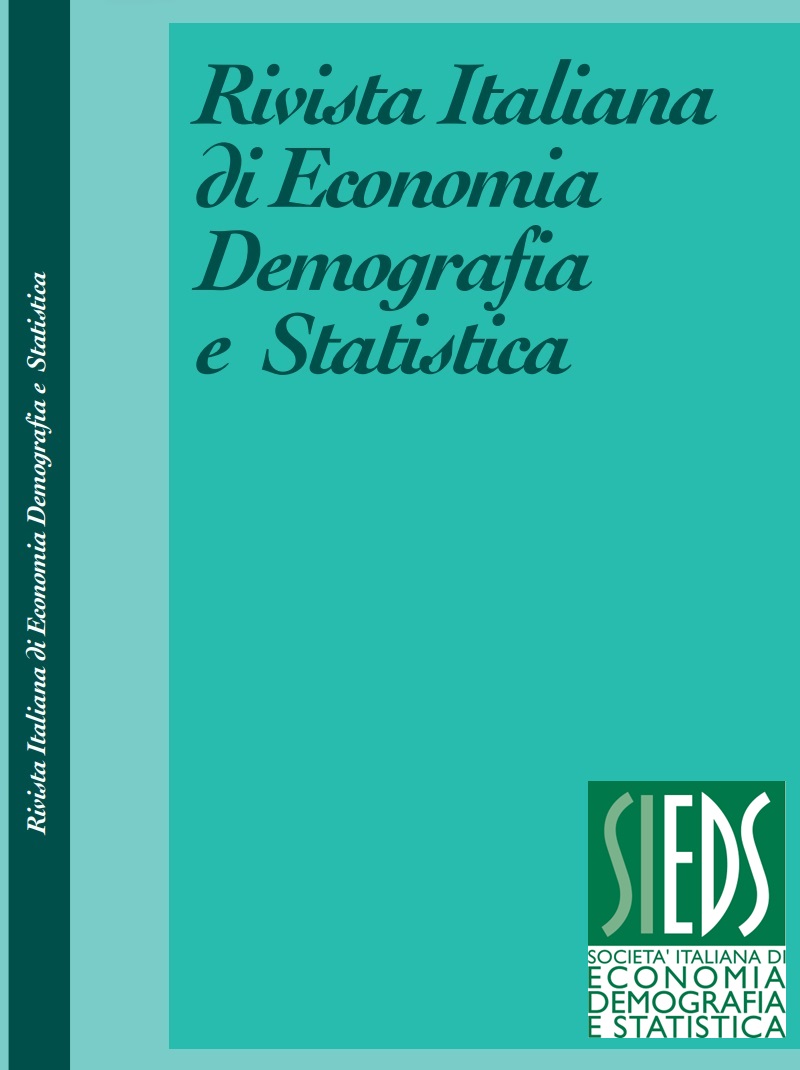Working through digital platform employment. The organisational model and the characteristics of the phenomenon
DOI:
https://doi.org/10.71014/sieds.v79i4.308Keywords:
digital platforms employment, digital economy, platform workersAbstract
Globalisation and digitalisation have profoundly transformed the configuration of the labour market, enabling the emergence of new organisational models. Digital platforms are the emblem of this change and challenge official statistics. Available statistics on workers involved in digital platform employment yield results that are not easily comparable due to methodological issues and the phenomenon's heterogeneous and relatively rare nature. Reflection on the measurement of digital platforms in terms of definitions and methodologies is the basis of the Handbook on Measuring Digital Platform Employment and Work published in 2023 in collaboration between OECD, ILO and the European Commission. In 2022, Eurostat promoted an experimental module on Digital Platform Employment and attached it to the Labour Force Survey. The module was voluntarily submitted in 2022 by 17 European countries, including Italy. The study aimed to test the methodology, definitions and questionnaire model to produce the first data on employment mediated by digital platforms, in view of an ad hoc module planned for 2026. The module collected data on the phenomenon's prevalence over the previous 12 months and the four weeks before the interview. The present paper introduces the specificity of the phenomenon, discusses methodological aspects related to its measurement, and presents the results of the DPE module concerning Italy, investigating the main profiles that emerge from the associations between the key variables associated with digital platform employment and other characteristics of individuals.
References
BECK P. 2017. The feasibility of measuring the sharing economy. November 2017 progress update, Office for National Statistics. London, UK.
BEVERUNGEN D., BREIDBACH C. F., POEPPELBUSS J., TUUNAINEN V. K., 2019, Smart service systems: An interdisciplinary perspective, Information Systems Journal., Vol. 29, No. 6, pp. 1201-1206. DOI: https://doi.org/10.1111/isj.12275
BONACINI L., FARERI S., PABA S., SOLINAS G. 2020. I sistemi produttivi in Italia tra globalizzazione e digitalizzazione. DEMB Working Paper Series UNIMORE, No. 166.
DE GROEN W.P., MASELLI I. 2016. The Impact of the Collaborative Economy on the Labour Market. CEPS Special Report. Belgium, Bruxelles: Centre for European Policy Studies – CEPS.
FLYVERBOM M. 2019. The Digital Prism: Transparency and Managed Visibilities in a Datafied World. Cambridge: Cambridge University Press. DOI: https://doi.org/10.1017/9781316442692
ILO 2018. Digital labour platforms and the future of work: Towards decent work in the online world. Geneva: International Labour Office.
ISTAT.2022. Rapporto Annuale 2022. La situazione del Paese. Roma: Istituto Nazionale di Statistica Roma.
LAUANDE RODRIGUES P., DE MINICIS M. 2021. Digital and algorithmic technology: the impact on employment and the workforce, Sinapps, XI, No. 3, pp.112-125.
KÄSSI O., LEHDONVIRTA V. 2018. Online labour index: Measuring the online gig economy for policy and research, Technological Forecasting and Social Change, Vol. 137, pp. 241-248. DOI: https://doi.org/10.1016/j.techfore.2018.07.056
OECD, ILO, EUROPEAN UNION, 2023, Handbook on Measuring Digital Platform Employment and Work, Paris: OECD Publishing.
OECD, 2019. An introduction to Online Platforms and Their Role in the Digital Transformation. Paris: OECD Publishing.
OECD, 2016. New Forms of Work in the Digital Economy. Ministerial Meeting on the Digital Economy, Technical Report, Digital Economy Papers, No. 260. Paris: OECD Publishing.
PERANI G., NASCIA L., a cura di, 2022. La misurazione dell’economia delle piattaforme in Italia. In Collana: Letture Statistiche – Metodi. Roma: Istituto nazionale di statistica.
PESOLE A., URZÍ BRANCATI M.C, FERNÁNDEZ-MACÍAS E., URZÌ BRANCATI M.C., 2020.New evidence on platform workers in Europe. Results from the second COLLEEM Survey, Joint Research Centre – JRC Science for Policy Report. Luxembourg: Publications Office of the European Union.
PIASNA A. 2020. Counting Gigs: How Can We Measure the Scale of Online Platform Work?, ETUI Working Paper, No. 2020.6. Bruxelles: European Trade Union Institute – ETUI. DOI: https://doi.org/10.2139/ssrn.3699350
SEMENZA R. 2020. Manuale di Sociologia del lavoro. Torino: Utet Editore.
SRNICEK N. 2016. Capitalism Platform, Malden USA: Polity Press.
Downloads
Published
Issue
Section
License
Copyright (c) 2025 Francesca Carta, Alessia Sabbatini

This work is licensed under a Creative Commons Attribution 4.0 International License.



